Do you consider yourself a mobile physician? Chances are, you already use at least one portable gadget when dealing with your practice. Thanks to advances in portable technology, medical professionals can now help patients outside clinics better than ever.
This benefits physicians themselves too. For one, it gives them access to even more patients than before. For another, it frees them from the physical confines of their practices.
Interested in becoming a more mobile doctor yourself? If so, you may want to take a look at the suggestions below. They just might help you position your practice optimally for the future.
1 – Get a mobile practice management system.
The first step to becoming a mobile physician is to find a way to work outside of the office. That means being able to access your files and schedule wherever you go.
To do this, you need to go digital. The physical restrictions of paper are obviously nonissues with a digital system. Unless you feel like carting around several kilos of paper with you wherever you go, an electronic medical record system is also in order.
So what should you look for? Obviously, you want EMR software that’s smartphone friendly. You might be able to get by with a clinic management system that runs on a laptop in some cases, but it would be better to get a multiplatform application.
If you do this, you won’t necessarily be stuck if you happen to be travelling without a laptop or tablet. Something that works on your smartphone is ideal since most physicians never go anywhere without theirs. Indeed, more and more physicians are even running their information searches straight off their smartphones.
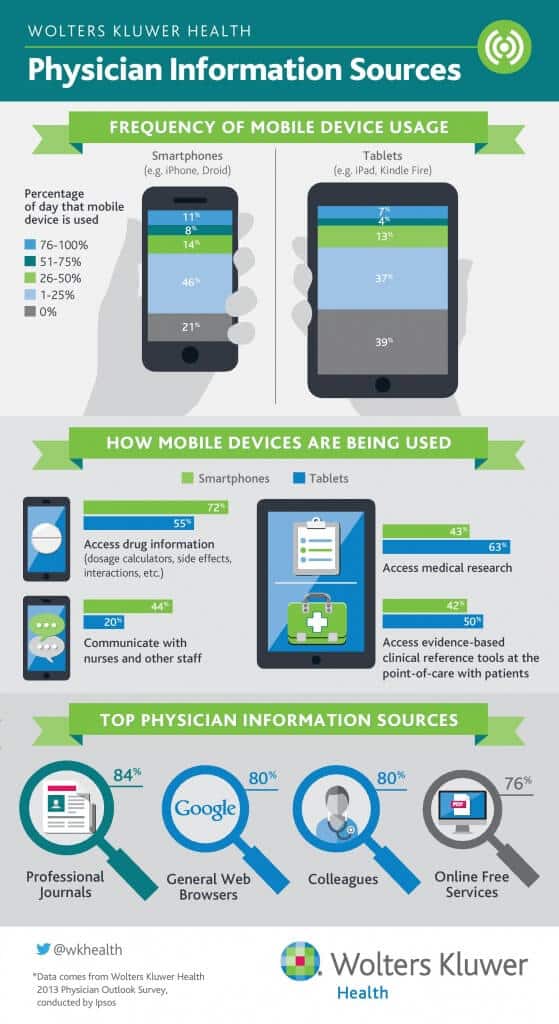
Smartphones are among the top info sources (and thus, portables) for doctors, according to a Wolters Kluwer’s study.
Aside from something smartphone-compatible, you may also want to get software that’s Web-based (at least if you have a decent Internet plan from your carrier). This makes accessing the program and your files even easier, as you will not even need to install executables on your devices. SeriousMD can be installed as well as accessed as a Web-based app, for example.
Seek something that everyone in your staff can use. This will allow you to communicate with staff and synchronize data with their files even when you are at different locations. In other words, your practice will be able to keep functioning even when more than one staff member is out of the office.
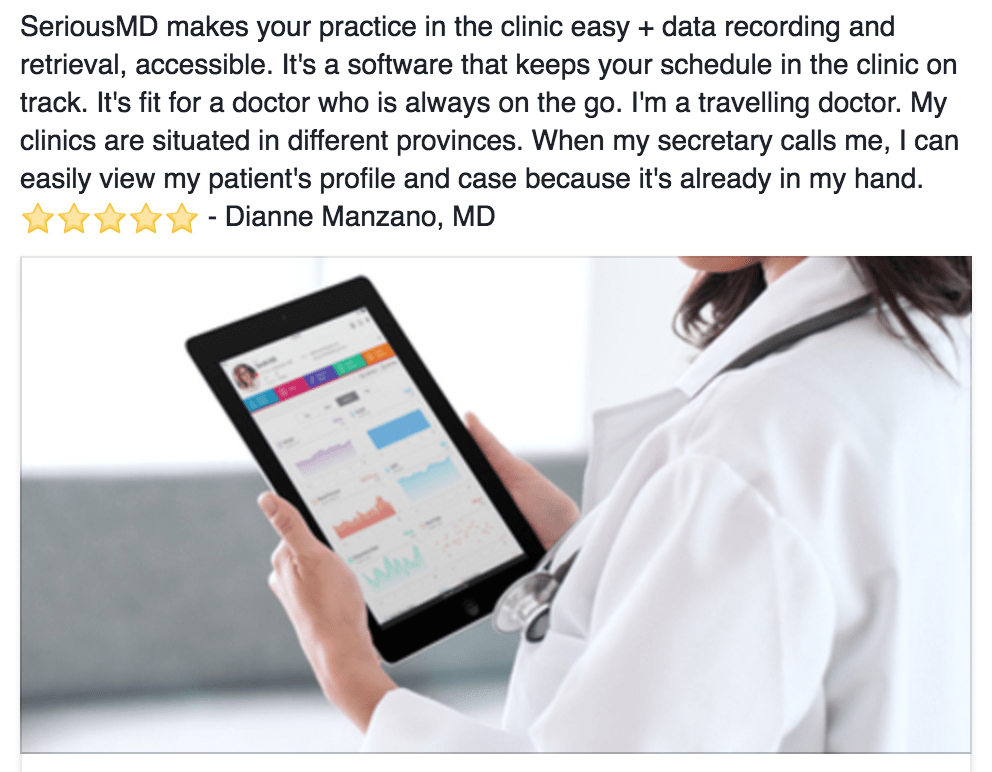
Doctors who travel a lot benefit from sharing EHRs with their staff.
Remember to make sure your chosen EMR software is secure and complies with the relevant privacy laws and regulations, by the way. Just because you’re taking the office with you on the road doesn’t mean your data is now everyone’s to see. You still have to protect your patients’ info too, so EHR security is important.
2 – Invest in portable/mobile healthcare tech.
Did you know that there is a smartphone cover case capable of acting as a mobile EKG device? Or one that can act as an all-in-one glucometer? You can even plug a device into your smartphone that lets you get mobile ultrasound images, in fact.
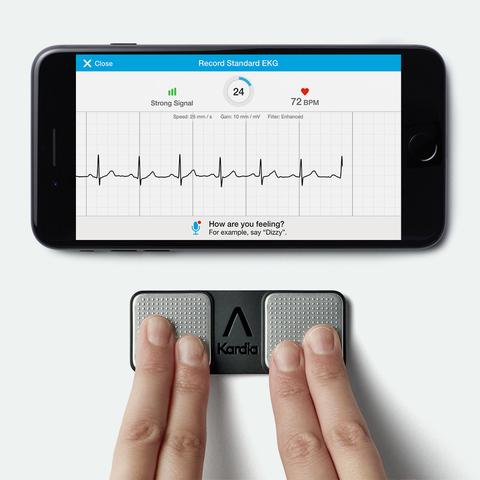
Devices like AliveCor allow doctors to take EKGs using their mobile phones.
Mobile plug-in health devices are letting physicians take their work with them more freely than ever before. If you tend to make a lot of house calls, you may want to invest in these sorts of things. It depends on your circumstances which sort of device might be most useful, of course.
Bear in mind that all the investment does not need to be on your side either. Some physicians encourage their patients to get mobile health tech for self-monitoring. Patients with diabetes could benefit from installing blood glucose monitoring apps or getting the smartphone case mentioned earlier. Physicians benefit from it too as they can have a potentially richer or better-recorded bank of health data to draw on when patients come in for check-ups.
3 – Use digital media to improve patient interaction.
Part of being a mobile physician is being able to reach patients beyond the traditional spaces, beyond appointments and the examination room. There are several ways of doing this, and a lot of them rely on the use of mobile technology. For example, you might start with something small like appointment reminders.
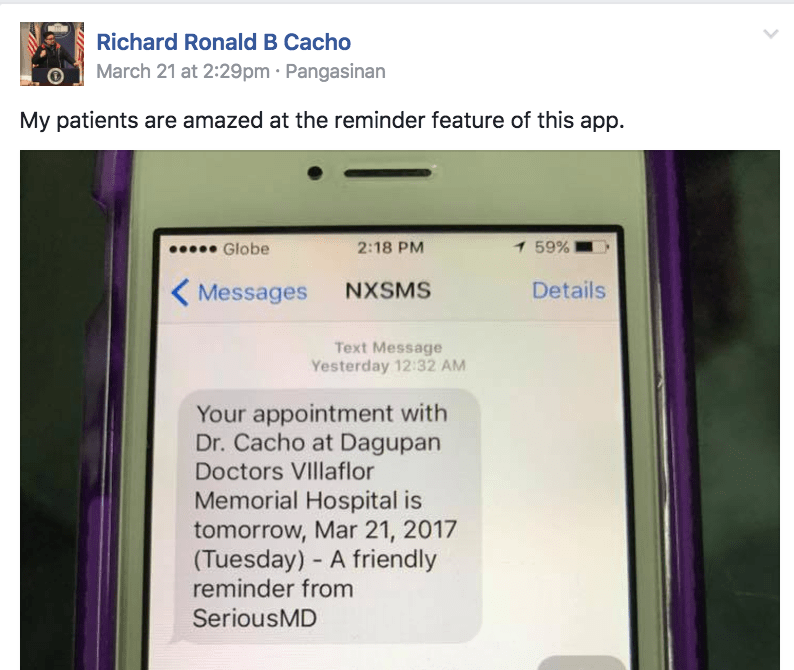
SMS reminders help improve patient-physician relationships.
This is a small beyond-the-office patient service—pre-appointment text messages to patients that ensure they remember their schedule at a clinic—but it can make a difference.
For one thing, it demonstrates a degree of investment in the patient’s well-being that goes beyond the moment when you are face to face with them.
For another, it can help you reduce patient no-show rates, maximizing your potential reimbursements and reducing costs by lowering readmission rates.
Finally, it can also help show patients that you are a tech-savvy doctor—something that can boost patient trust by suggesting you are unlikely to be outdated at your practice (whether in terms of medicine or something else).
Some EHRs have features built in to make expanded digital health services easier for practices. Some may have SMS appointment auto-reminders like the one mentioned above. Robust patient portals can also help if you want to maximize patient-physician interaction.
4 – Consider offering medical services outside of your clinic.
This is actually related to the previous suggestion. If you can use the latest healthcare technology to reach patients outside of your clinic’s physical location, why not actually set up medical services for patients who cannot come to the clinic?
For instance, think about offering out-of-clinic appointments. These might be home visits or even ones you make to the patient’s office instead, something like the ones arranged through Heal.
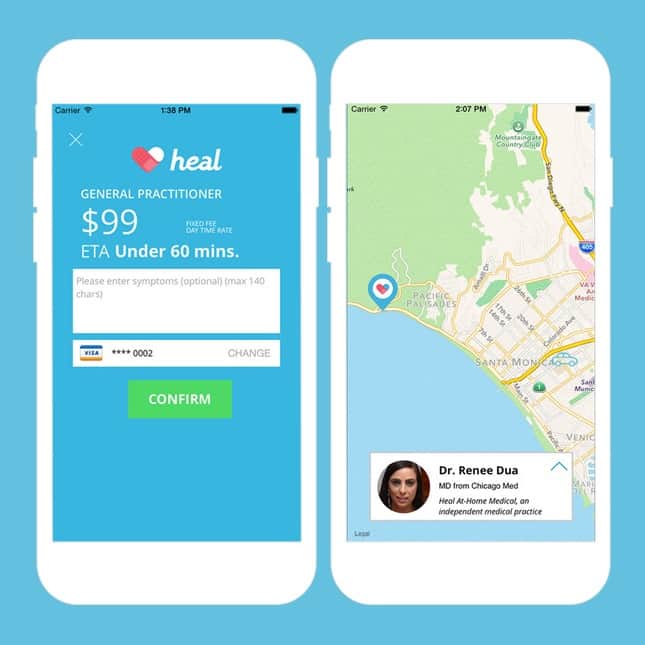
The US-based Heal app arranges home or office visits for people who can’t get away from their tasks to go to a doctor’s clinic.
You can set up limitations to make it cost-efficient. For example, such appointments may only be made on certain days or hours, within a specified location on the map, and for a minimum consultation fee that can cover your transport.
You can also set up a dedicated system for making such appointments, e.g. a specific phone number. You might even use your EHR for this if it happens to include robust medical scheduling software.
If set up right, a physician can benefit greatly from becoming a mobile doctor in this sense. It might allow him to tap into a previously underserved area, for example. This could expand his client base while also keeping overhead costs (for clinic operations) down, if he manages it intelligently.
This is just one example, of course. Some practices, especially overseas, have already gone into other options like telehealth too. Medicine and patients are being changed by popular technology, so it makes sense that those who find ways to use these changes are the ones who fare best.

